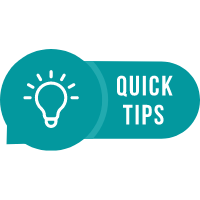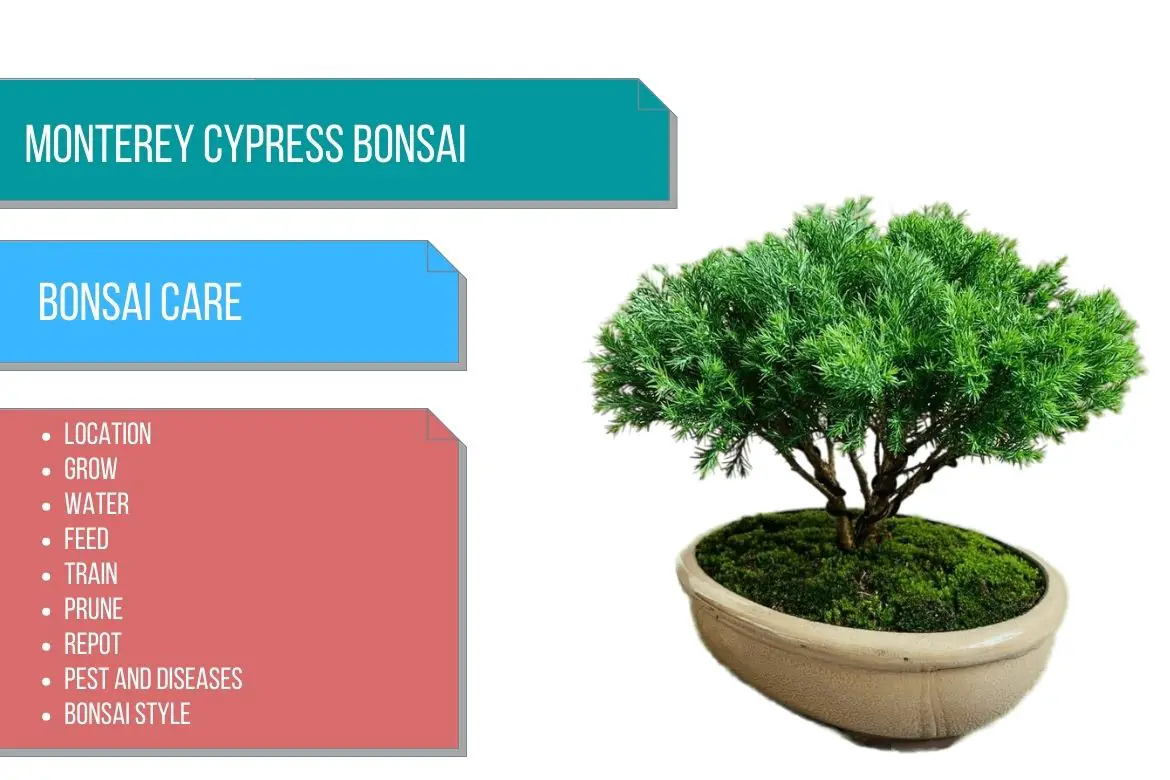
Monterey cypress
(Cupressus macrocarpa)
Country of Origin : USA, Mediterranean, North Asia
Bonsai Styles : Broom, Formal Upright, Forest
Zone : 7 – 11
Monterey cypress is an evergreen conifer with small, scaly, densely packed needles.
The growth habit or growth pattern of this plant is broadly columnar when it is young. However, as it grows older, its branches become heavier and its crown becomes broader. This growth habit gives it its natural pyramid-shaped appearance.
One of the most widely used varieties of Cupressus macrocarpa for bonsai is Cupressus macrocarpa ‘Goldcrest’. Easily recognized by its greenish-yellow foliage, it is readily available commercially.
Because of the tough and tolerant nature of this species, Monterey cypress (one of the few cypresses) is perfectly suited to making bonsai (especially an indoor bonsai tree).
When creating a Monterey cypress bonsai, try to emulate the pyramidal form that the tree naturally displays. Also, it can be shaped into an upright shape, or used to create an indoor forest.
Other cypress tree species that can also be used to make a bonsai is Hinoki cypress. Click here to read more about the Hinoki cypress bonsai tree.
As far as bonsai style is concerned, training the tree in broom style is easy. However, the tree can also be trained in a formal upright style or can even be used to make a small indoor forest.
Read more about other bonsai trees species in : Types of bonsai trees

Monterey cypress bonsai is not usually recommended to bonsai beginners. However, if you succeed in providing the tree with the right conditions at all times, the bonsai tree will flourish.
Also, in order to achieve the desired thickness of the trunk, there can be a few difficulties to overcome. When planted in the a bonsai pot, the trunk will grow slowly.
To increase the size of the trunk, plant the tree in a big pot or on the ground for 2 to 3 years.
Best location to keep Monterey cypress Bonsai
Cupressus macrocarpa bonsai prefers to be kept in full sun.
It can also be kept in partial shade.
The preferred place to keep the bonsai tree in the summer is in a bright, sunny location indoors / outdoors. It can also be kept outdoors from mid-spring (after the last frost), in a nice location with lots of sunlight and warmth.
When keeping the bonsai container indoors, keep it in a west or south facing window or windowsill.
As soon as the temperature dips below 41°F (5°C) in the fall and winter, it is best to place the bonsai in a bright area where the temperatures are between 41°F and 59°F (5 and 15°C).
You may want to place it by the window in an unheated room during this period. However, if the humidity level does not drop below 50%, the plant will tolerate conditions where the temperature is over 64°F (18°C) in a heated room.
Protect the tree from wind.
Do not move it around constantly; give it a chance to settle in its new location. Ensure that your tree receives an even distribution of sunlight by rotating it occasionally.
IMP: Refer sunlight requirements for indoor plants for more indoor gardening ideas. Also, refer to do bonsai trees need sunlight for more indoor and outdoor bonsai location ideas.
Propagation of Monterey cypress
During the summer months, use hardwood cuttings.
Apply some rooting hormone to the base of the cuttings. Plant the cuttings and water the soil.
Cover the cuttings with plastic so that moisture can be retained around the cutting.
Keep the tray at a warm place with ample sunlight. Water the pot every 4-5 days. Make sure not to over-water the pot.
The cuttings will take almost 2 months to root.
Watering Monterey cypress Bonsai
Both temporary drought and occasional overwatering are equally tolerated by the Monterey cypress bonsai tree.
Keep the soil moist, particularly during the main growing season.
You should keep the bonsai soil on the drier side during the winter months when the temperature is between 41°F and 59°F (5°C and 15°C). However, do not let it dry completely.
You can also spray some mist on the foliage of the tree.
You can use tap water to water your Monterey Cypress bonsai tree.
Read watering bonsai tree for more details.
Wiring Monterey cypress Bonsai
There are only a few types of bonsai style that can easily be achieved without the use of wire. These include the broom style, which is uncharacteristic of cypresses, and the columnar shape which tends to be associated with young bonsai specimens.
It is necessary to resort to wiring in order to achieve other styles.
In general, late winter and early spring are the preferred times to wire Monterey cypress bonsai.
The branches of a Monterey Cypress tree are long and flexible.
If the branches are guyed down by wires through the bonsai pot, it is highly likely that the branches will break from the trunk. Hence, be very careful when trying to use the suspended wiring method.
Pruning Monterey cypress Bonsai
When to prune Monterey cypress bonsai?
How to prune Monterey cypress bonsai?
The process of pruning can be carried out at any time throughout the year. It is advisable, however, to do this in the spring, before the main growing season begins.
Reduce the length of new shoots by about a third.
Hand pinching should be done on new shoots. This method preserves the scale closest to the trunk and prevents it from turning brown like it would if it had been cut back.
If you are intending to cut back Monterey Cypress trees, you should only cut them back at the points where wood has already formed.
A new shoot on a young bonsai specimen should be allowed to grow longer than a shoot on an older bonsai specimen. Pinching back the new growth on a regular basis will allow the foliage to become denser.
On the other hand, by pruning the tree less frequently and allowing it to grow more freely, you will be able to encourage it to grow thicker branches.
Repotting Monterey cypress Bonsai
When to repot Monterey cypress bonsai?
Bonsai Monterey cypress tree can be repoted every 2 to 3 years in spring, before new growth sets in.
Perform root pruning at the time of repotting.
Do not fertilize or expose the tree to direct sunlight for a month.
You can use a basic free-draining bonsai soil mix as a potting soil.
OR
You can use a mix of sand, loam and peat moss in the ratio 2:1:1.
OR
You can also use a mix of garden compost, sand and fired clay particles in the ratio 1:2:1.
Must Read: Bonsai Soil Recipes
Must read : Choosing the right bonsai container
Feeding Monterey cypress Bonsai
In the spring and fall, liquid fertilizer should be applied once every two weeks.
In the winter season, apply feed to the bonsai only when the bonsai is kept at a warm location. Reduce the frequency to once every 4-6 weeks.
Read more about bonsai fertilizer and its application.
Diseases and pest of Monterey cypress Bonsai
This tree can be affected by Spider mites, mealy bugs, and scale insects.
All of these pests can be controlled by application of insecticidal soap, neem oil or horticultural oil. These can even be removed manually by a jet of water.
Monterey cypress bonsai care
As mentioned earlier, when grown in a pot, the trunk of the tree will thicken slowly. To counter this, plant the tree in a much larger container for at least 2-3 years. When you are happy with the thickness of the trunk, you can move the tree to a smaller pot.
Wet trees should not be wired or unwired to avoid damage to their bark.
Monterey Cypress is a relatively hardy tree. However, it flourishes in a warm, moderately light, dry place.
Monterey Cypress trees are much better suited to growing as bonsai than most of the other species. This is due to their ability to tolerate the heat indoors better during the winter months.
Monterey cypress trees are available for sale as pot plants in various sizes and ages.
The bonsai trees can also be purchased from specialist bonsai shops from time to time. These specimens, however, are normally not trained.

